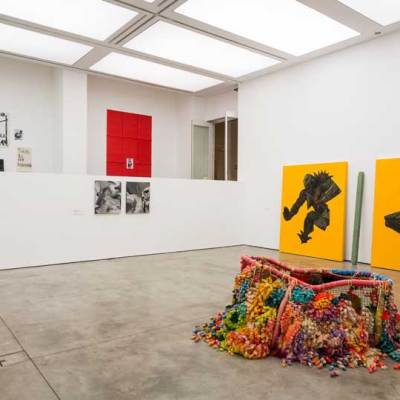In the 1880s William Morris wrote: ‘I think it is desirable that the artist and what is technically known as the designer should practically be one.’ The statement was in relation to an enquiry on the role of design and art in industry in Britain. Unwittingly, with these words Morris was predicting the career of Andy Warhol, an artist who worked successfully as a graphic designer before he transferred those talents into what we would call fine art.
This quote is central to the show ‘Love Is Enough’ that I am curating at Modern Art Oxford (MAO), which examines the careers and connections between Warhol and Morris. Born nearly 100 years apart, they never met and didn’t even share a century. And in the vast inventory of his many possessions, Warhol listed only a single book on the Victorian pioneer, which leads me to believe he wasn’t particularly interested in him. As artists, however, they have a lot in common; both were restless and highly ambitious, and what I would call multimedia artists. The scale of their legacy is almost unimaginable.
Despite a yearning for a life based on a medieval model, William Morris was actually incredibly contemporary in his approach. He used his name as a way to promote and sell his work – as goods in an Oxford Street shop – years before the idea of brand identity came about. He also mastered multiple skills and techniques, from stained glass to typography.
One of the joys of being an artist is being able to go ‘backstage’ at museums and galleries, and being able to see what’s kept in storerooms and handle materials. Researching this show was a brilliant opportunity to do that. As well as examining archival materials at Kelmscott Manor, the William Morris Gallery, the William Morris Society and Exeter College, Oxford, I went to Bradford Museums & Galleries to look at Morris & Co. stained glass. At Sanderson we selected a 35-foot-long piece of wallpaper called a match piece, which shows the various stages of printing a tapestry, and this will be a major exhibit in the show.
Conservator Jane Thompson-Webb prepares a panel from William Morris’ Quest for the Holy Grail Tapestries (1895–1900). Image courtesy Jeremy Deller

One of the highlights was visiting the stores at Birmingham Museums & Art Gallery and, surrounded by cars and steam engines, witnessing the unrolling and hoovering of a panel from the Holy Grail tapestry series (pictured). The series took Morris and Co. five years to make. We have borrowed its climatic panel for the MAO show, which depicts the attainment of the Grail.
I’ve known Matt Wrbican – chief archivist of the Andy Warhol Museum in Pittsburgh – for a long time, and he knows more about Warhol than anyone. He took me to the museum archive to show me some of the time capsules, including the custom-made Letraset in Warhol’s mother’s handwriting – which we’ve also included in the show. We’re also borrowing a signed photograph of Shirley Temple, sent to Warhol when he was 13 and one of his prized possessions. The photo is a clear indication that his obsession with celebrity was lifelong. At heart, he was still the young boy who collected celebrity autographs – his career was just an extension of that.
Many of the loans are from Anthony d’Offay with material from Artist Rooms and his own collection, including a number of early drawings. For me it was important to connect the show to Anthony, as it was through his gallery in 1986 that I met Warhol whilst a student at the Courtauld Institute of Art. That encounter set me on the path I find myself on now.
There is a room in the show we’ve called ‘A Factory As It Might Be’, which deals with studio practice and production and takes its title from a William Morris pamphlet. The way in which Morris and Warhol organised their production was both consistent with how they viewed the world, and how they wanted the world to be. Morris was interested in medieval craftsmanship and the work of artisans; Warhol, on the other hand, organised the Factory as both a place of hard work and a space for play. It was a place where you never knew what was going to happen next. It reminds me of how technology companies organise themselves today – Warhol was anticipating this kind of office environment, where staff are constantly working yet have space to relax and play too. Morris’ idea of craftsmanship is also still relevant today: well-made, reliably sourced products are very much in vogue.
This show is not strictly an art-historical exhibition – it’s more of a speculative show; perhaps that’s why Modern Art Oxford asked an artist to curate it. I’m asking the audience to suspend their disbelief momentarily and time travel with me to make connections about art across two centuries.
‘Love is Enough: William Morris & Andy Warhol’, curated by Jeremy Deller, is at Modern Art Oxford from 6 December–8 March 2015.

